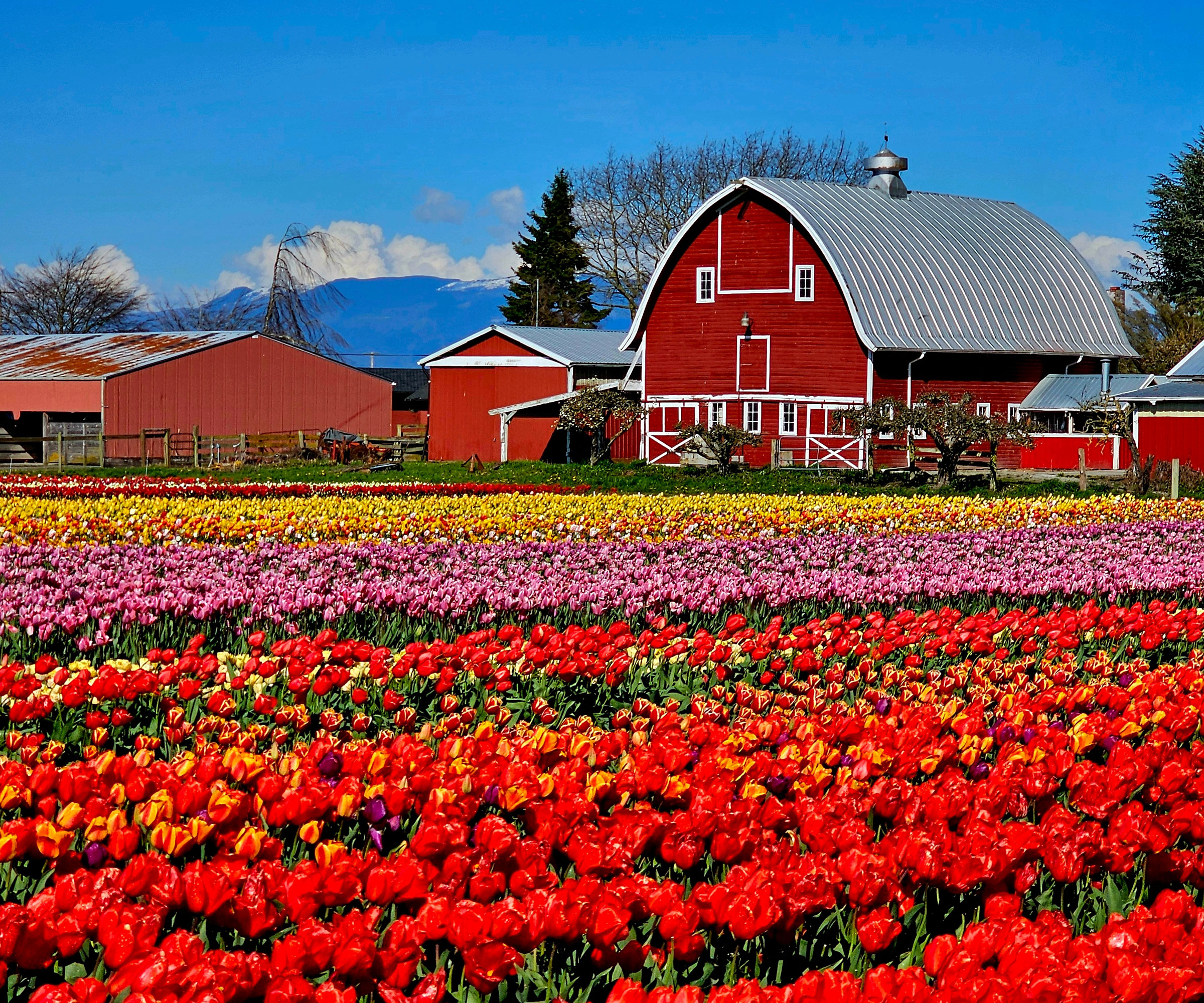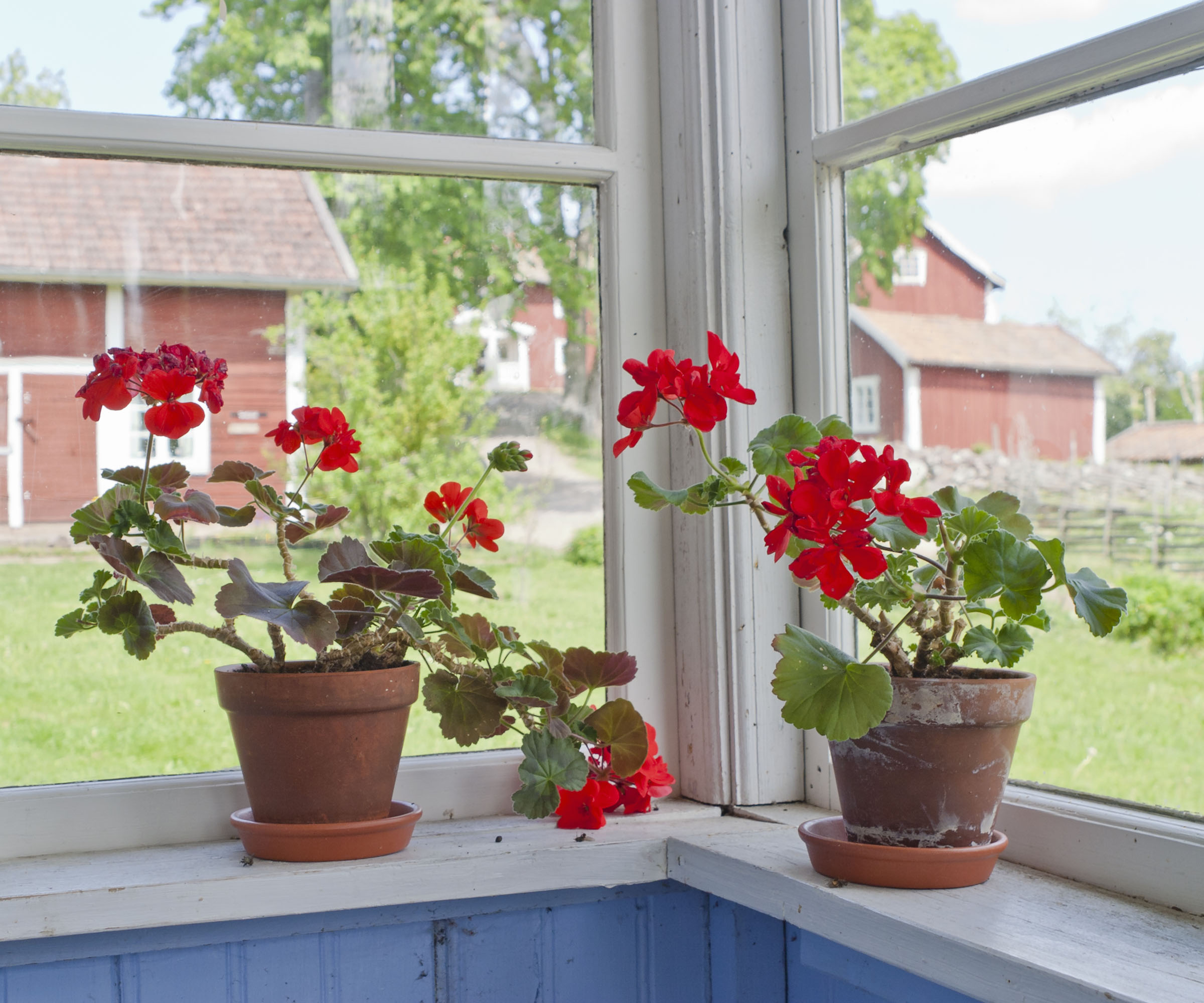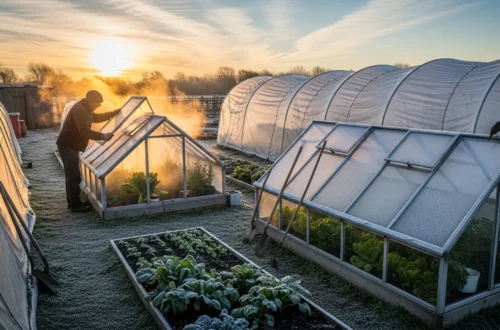Though traditional lawns used to be commonplace, the popularity of more sustainable lawn alternatives continues to grow. These unique alternatives to a lawn are of special interest in regions where conditions may be particularly harsh, such as those that experience prolonged periods of drought or high temperatures.
Notable features of sustainable landscapes include those that make use of water-wise plants, various types of groundcover, or even hardscaping. Using lawn substitutes is a great way to be more sustainable, reduce lawn maintenance, and help local pollinators while providing a lush look for your yard.
1. Chamomile
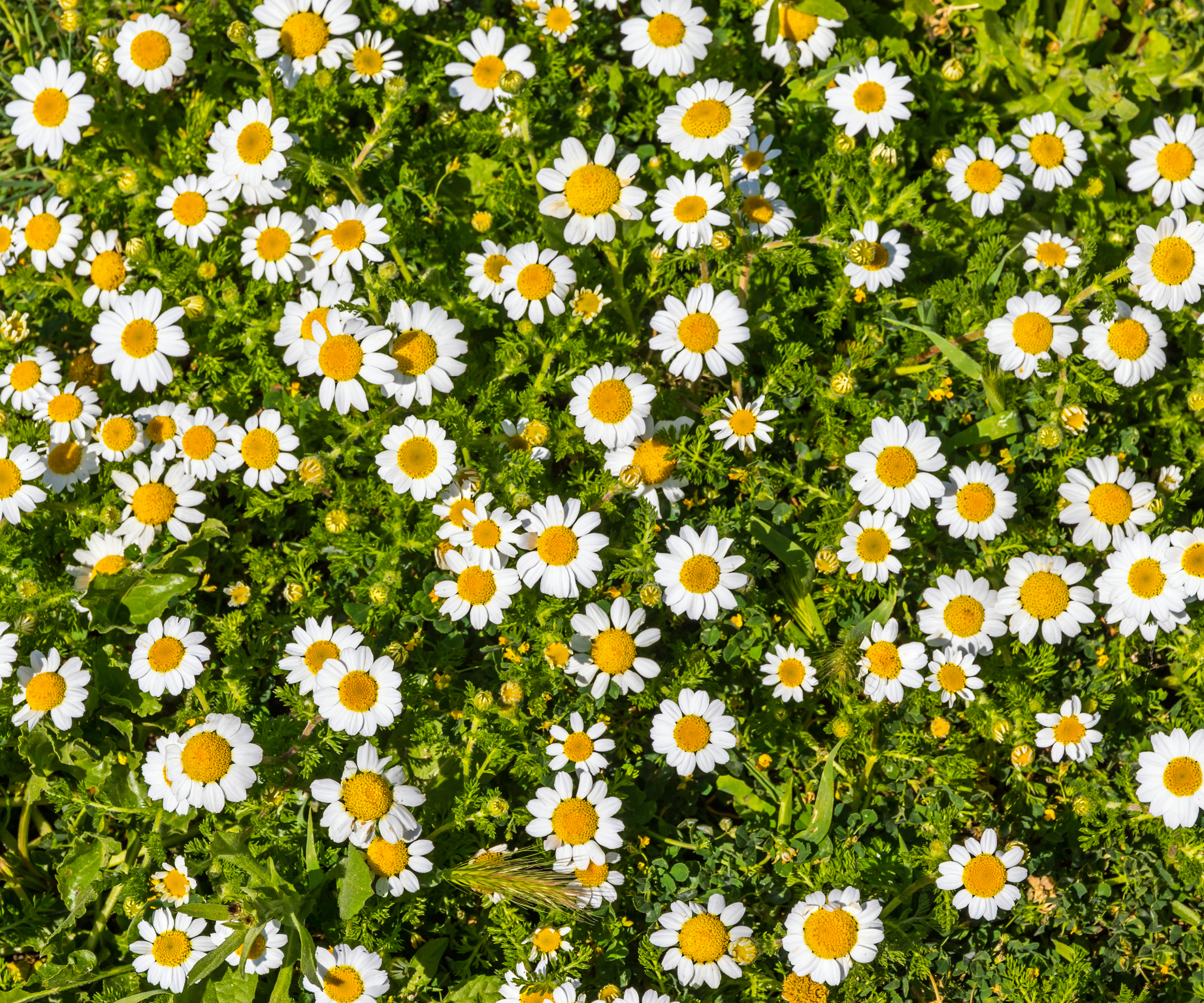
(Image credit: katatonia82 / Getty Images)
Growing a chamomile lawn is a great alternative to grass and is planted in spring. Among the most popular non-grass lawn alternatives, chamomile is praised for its ease of care. Once established, plants will require only minimal maintenance; thriving without supplemental watering, feeding, or the need for pruning. Flower production occurs best where the plants are able to receive full sun. However, most species are able to tolerate part-shade conditions without becoming leggy or losing vigor.
Chamomile is also fragrant, making it one of the best alternatives for homeowners looking to combine practicality with sensory appeal. The light scent released when walking across chamomile can bring a calming, almost therapeutic effect. For more ideas, you can also explore Fragrant Garden Plants that bring beauty and aroma to your outdoor space. Blending chamomile with other low-growing plants, like thyme, can add further biodiversity to your yard.
2. Sedum
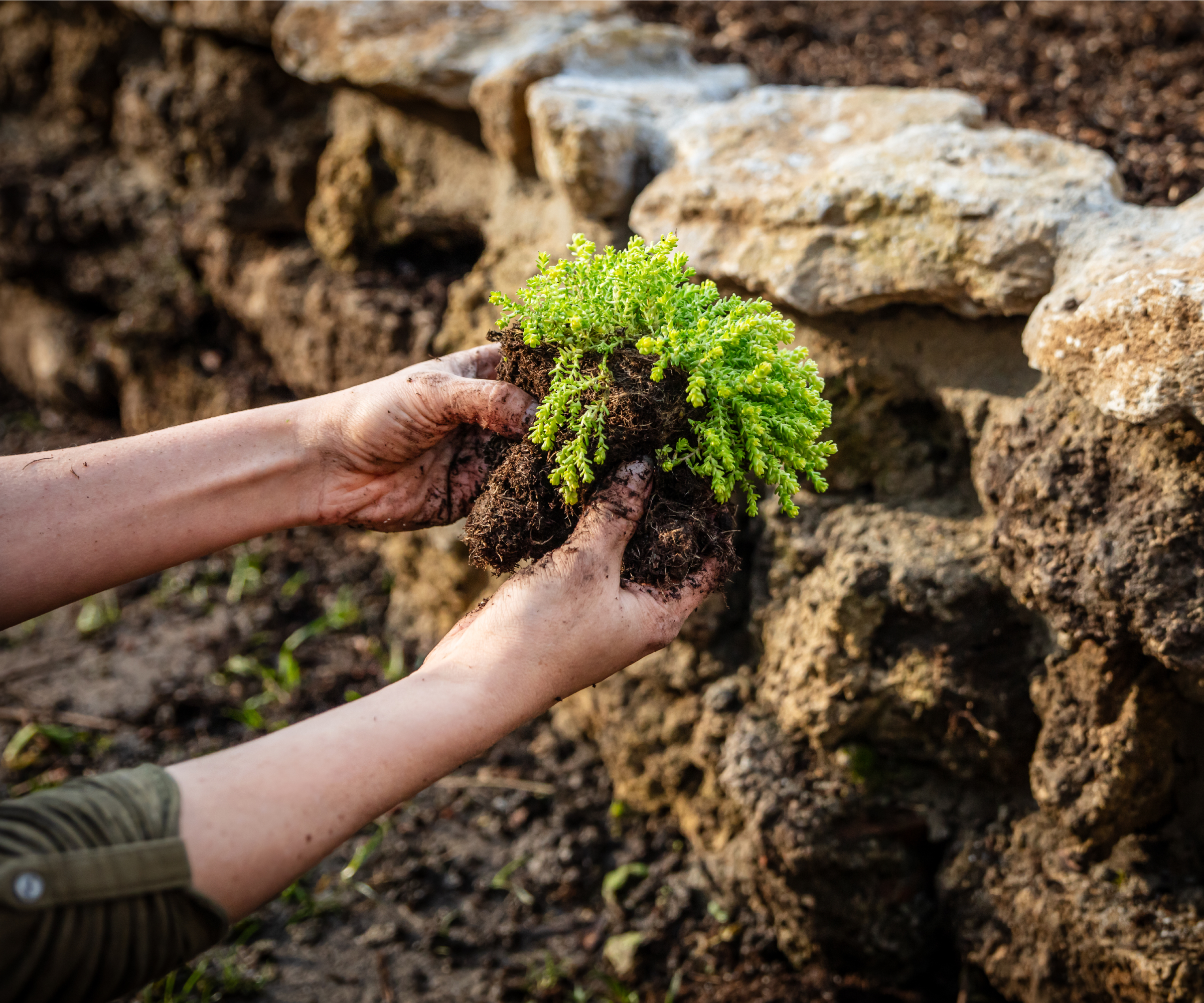
(Image credit: miriam-doerr / Getty Images)
Succulent sedum plants are among the best candidates for use in lawns that experience drought. A sedum lawn will spread quickly where conditions are ideal, covering large areas with attractive greenery. Though sedums are sure to leave a lasting impression, their delicate nature should be noted. Experienced growers suggest it not be planted in high traffic areas, where its stems may be easily damaged or broken.
Sedums thrive on neglect, which makes them one of the best alternatives for gardeners who want a low-maintenance landscape. They’re also pollinator-friendly and provide nectar late into the season when other flowers have faded. For more inspiration, you can explore our guide on Drought-Tolerant Garden Ideas to see how sedums and other hardy plants can transform your outdoor space. Sedum varieties come in an array of colors, so homeowners can design groundcover with visual interest year-round.
3. Moss
Among the most sustainable alternatives to grass lawns is the moss lawn. Occurring naturally where conditions remain cool and moist throughout summer, this alternative can be among the most difficult to establish if cultural requirements have not been met. Plants that receive too much sun will not survive. Moss is most commonly found growing beneath trees or in woodland areas under full shade or dappled-light conditions.
One of the best alternatives for shaded yards, moss lawns are lush and velvety, offering a unique carpet-like surface. Moss also prevents soil erosion and supports biodiversity by creating microhabitats for insects. If you’re planning a shaded landscape, our guide on Shady Garden Solutions can give you more ideas for plants that thrive in similar conditions. Since moss does not require mowing or fertilizers, it’s a cost-effective choice for those seeking eco-friendly landscaping solutions.
4. Creeping Thyme
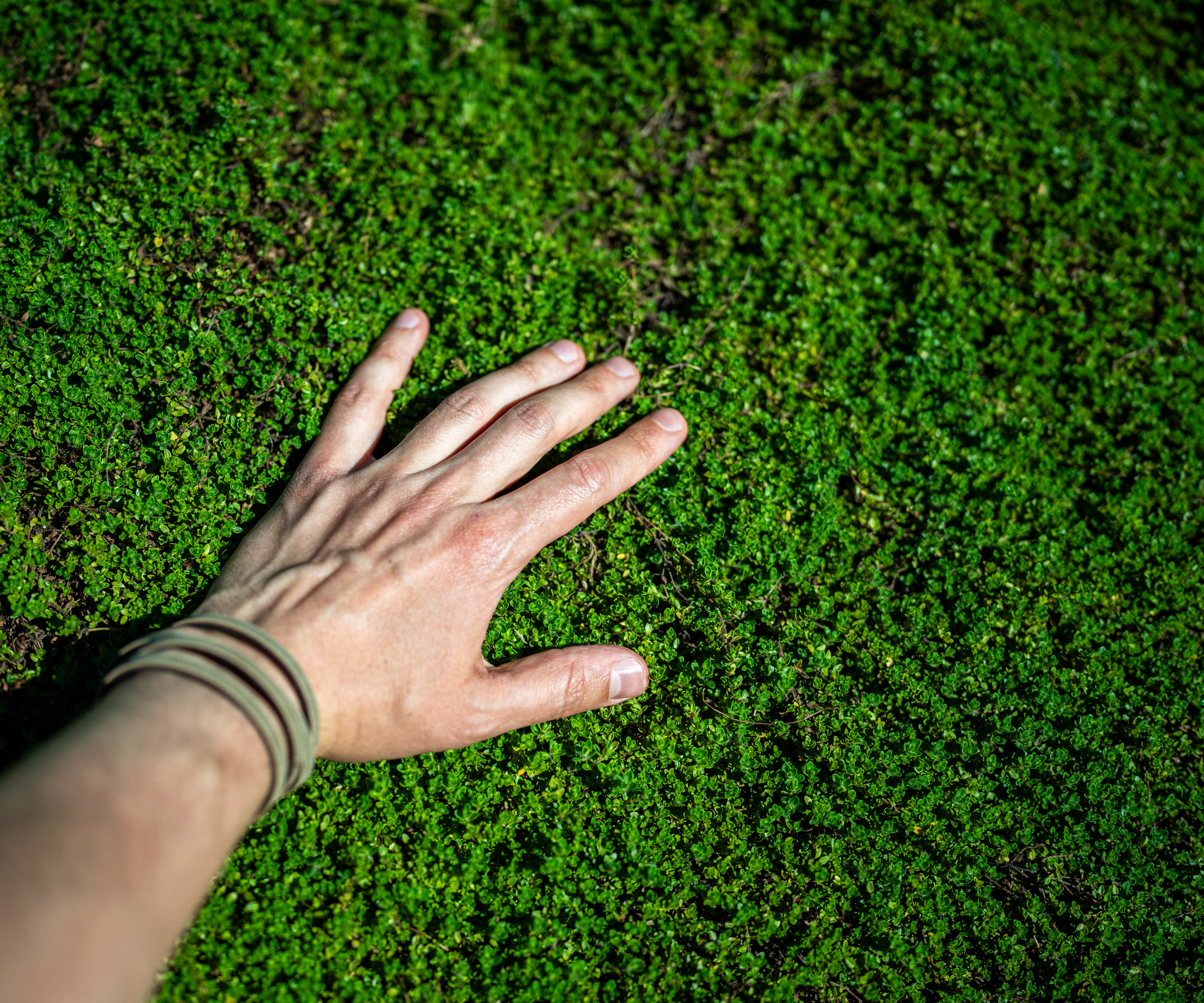
(Image credit: Dmitrii Marchenko / Getty Images)
A creeping thyme lawn is highly regarded as alternative to traditional lawns. Each spring, gardeners can expect the groundcover to produce a profusion of vibrant blooms. The plants are praised for their toughness and ability to withstand use in “high-traffic” areas. Creeping thyme spreads easily, multiplying over the course of only a few seasons. Highly resistant to drought, perennial species return each year, requiring very little care from growers.
This aromatic groundcover is also edible, making it one of the best alternatives for multipurpose landscaping. If you enjoy mixing beauty with functionality, check out our guide on Edible Landscaping Ideas to discover more plants that serve both ornamental and practical purposes. Its flowers attract bees and butterflies, supporting pollinators in the local ecosystem. With its low height, creeping thyme pairs beautifully with stepping stones or pathways, softening hard edges in garden designs.
5. White Clover
Considered by some to be a common turf weed, the use of white clover as an alternative lawn continues to gain popularity. In bloom, flowers serve as a vital source of food for wide species of bees and other pollinators. Though the perennial is considered to be short-lived, it often reseeds freely. Attractive foliage further adds to the allure of white clover, making it a good choice for those wanting to emulate the look of a more traditional lawn.
As one of the best alternatives to grass, clover is nitrogen-fixing, meaning it naturally enriches the soil without synthetic fertilizers. This helps improve the overall health of your yard and reduces long-term costs. Clover lawns also stay green longer during dry spells, making them more resilient than traditional turf grass.
6. Common Daisy (Bellis spp.)
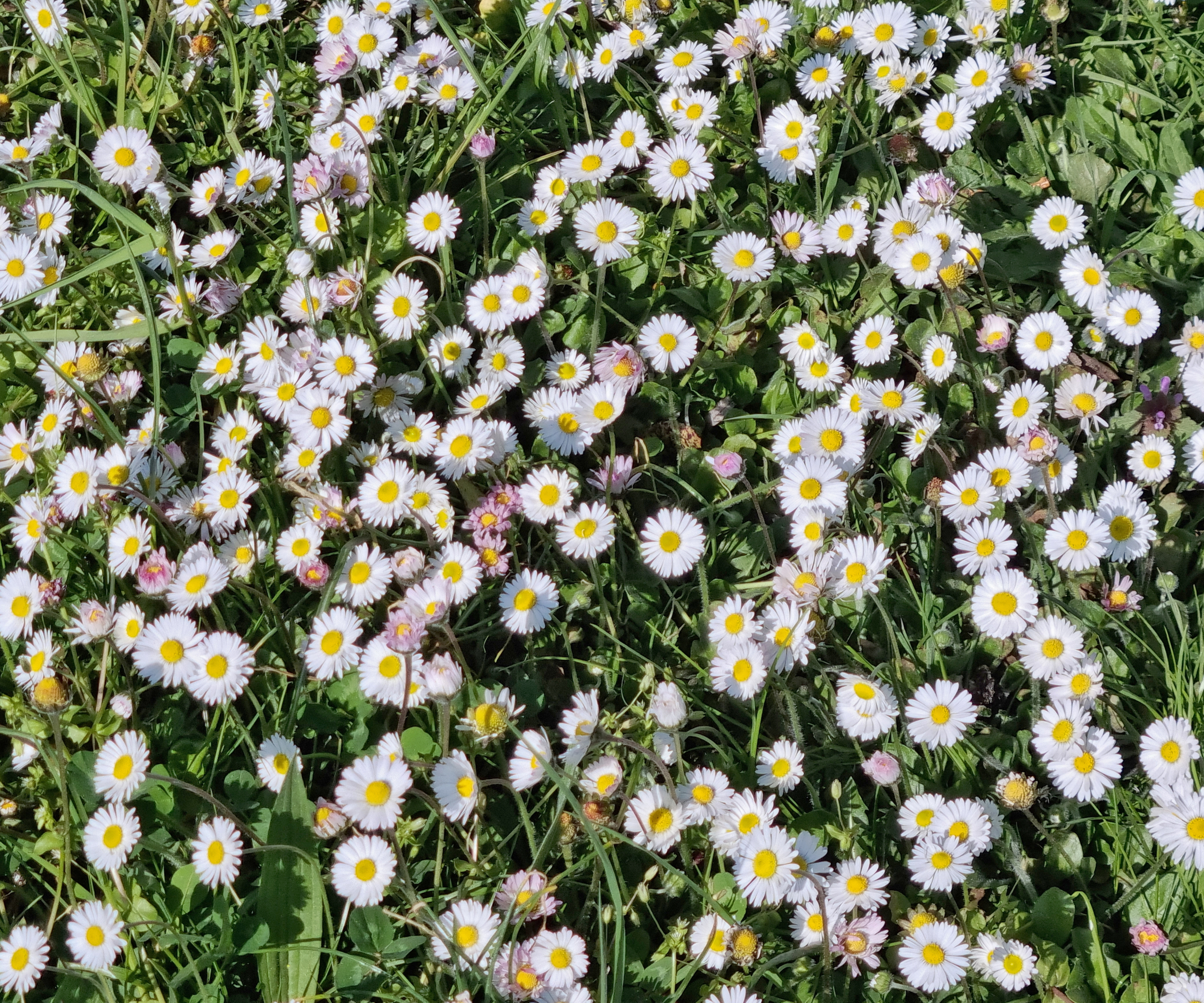
(Image credit: Federica Grassi / Getty Images)
Common daisies are exceptionally well-suited to naturalized lawns. This is due to their hardiness to cold, resistance to disease, and overall ease of growth. Gardeners can expect plants to produce small, ray-like blooms, lasting from late winter through early spring. Though most species of Bellis are tolerant to cooler temperatures, plants may struggle where conditions are especially hot.
For gardeners wanting a cheerful, cottage-style appearance, daisies are among the best alternatives. They blend easily with other wildflowers and give lawns a soft, naturalized look. (discover more inspiration in these Cottage Garden Ideas). Daisies also reseed themselves, ensuring continuity year after year with minimal replanting.
7. Creeping Jenny
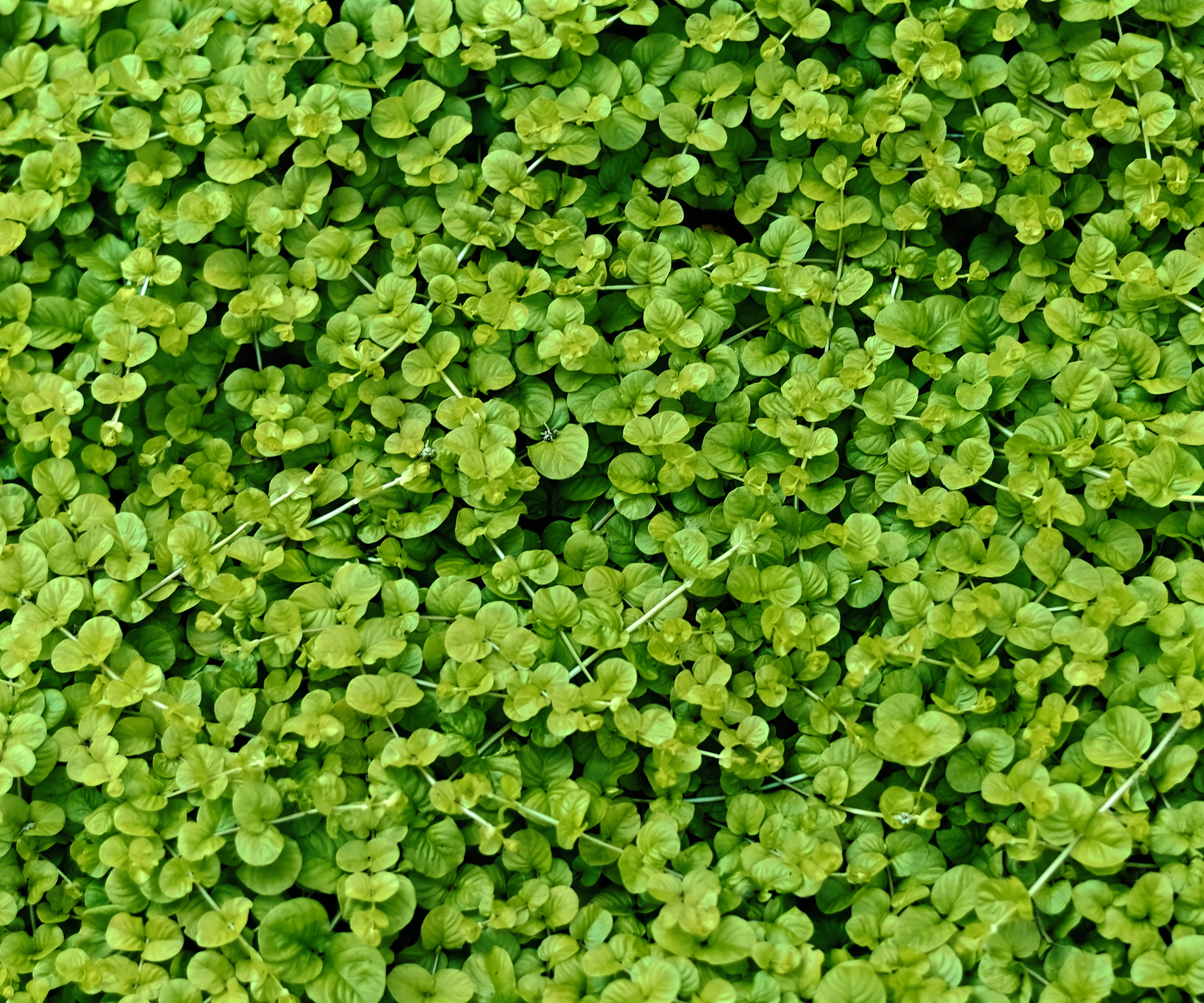
(Image credit: John C Magee / Getty Images)
Creeping Jenny ground cover, Lysimachia nummularia, is often rated among the most aggressive lawn alternatives. Attractive foliage gives way to small, yellow blooms; adding color to rock gardens, slopes, and/or otherwise inhospitable growing beds. Plants are able to spread quickly, sometimes, overtaking anything that stands in their path. Care should be taken to ensure that the species does not become invasive, sowing or transplanting only where it can be controlled.
This fast-growing spreader is one of the best alternatives for erosion control on banks or uneven ground. Its bright foliage creates a stunning contrast when paired with darker plants. However, homeowners should monitor their growth closely to avoid crowding out less vigorous species.
8. Peanut
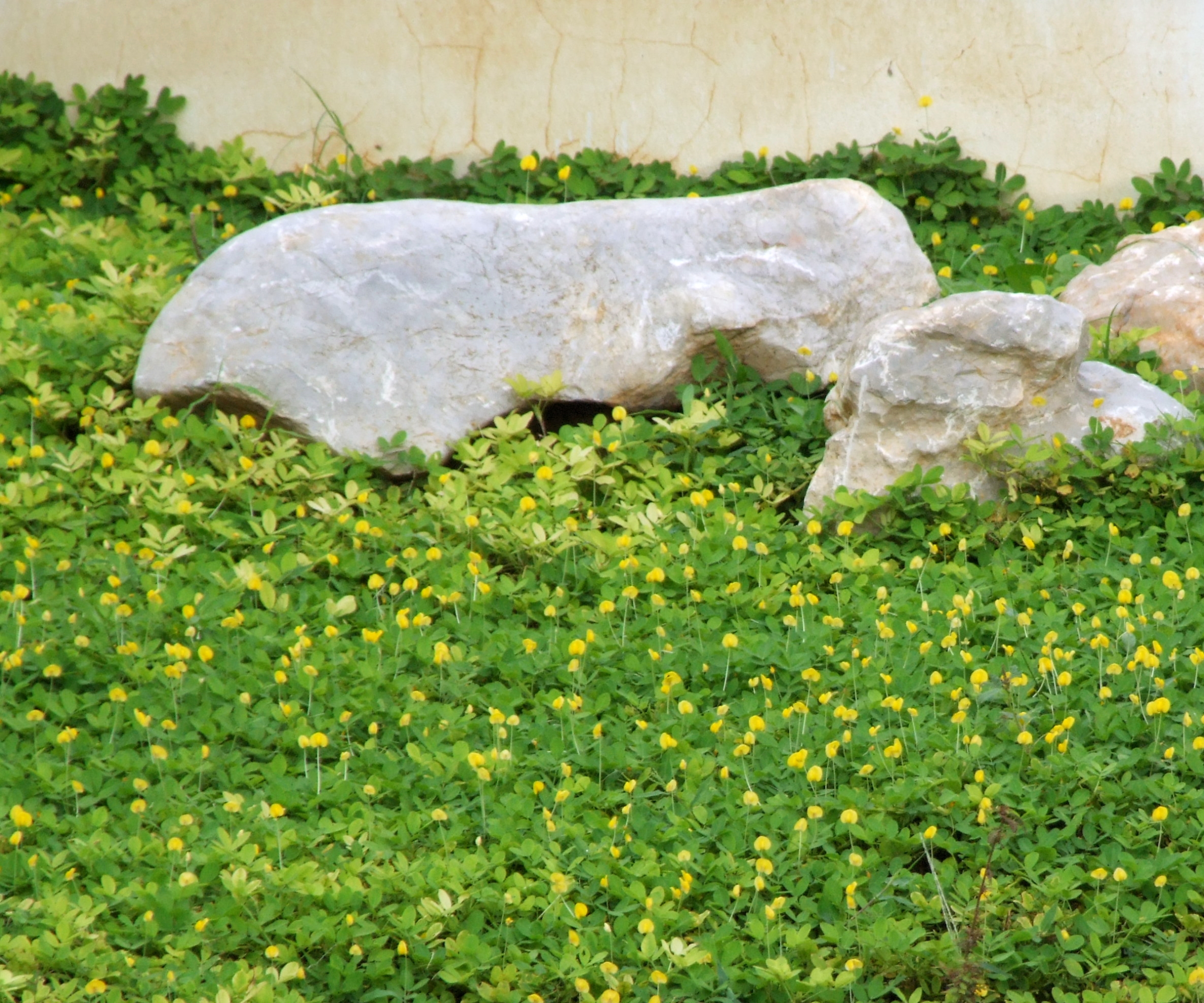
(Image credit: Tanantornanutra / Getty Images)
Perennial peanuts used as groundcover are a versatile option for those living where conditions are hot and humid. Plants spread rapidly to form dense mats, ideal for controlling erosion or preventing weeds. For the growth of lush foliage, gardeners should aim to plant in full sun. Though it is not required, monthly mowing may help to maintain size, promote bloom, and can even serve to rejuvenate older plantings that have lost vigor.
In addition to their resilience, perennial peanuts are nitrogen-fixers, enriching soil health naturally. They produce small yellow flowers that add visual interest and attract pollinators. For those in southern climates, this is one of the best alternatives to grass that offers both beauty and functionality. For more eco-friendly tips, check out these Low-Maintenance Garden Hacks.
9. Mazus
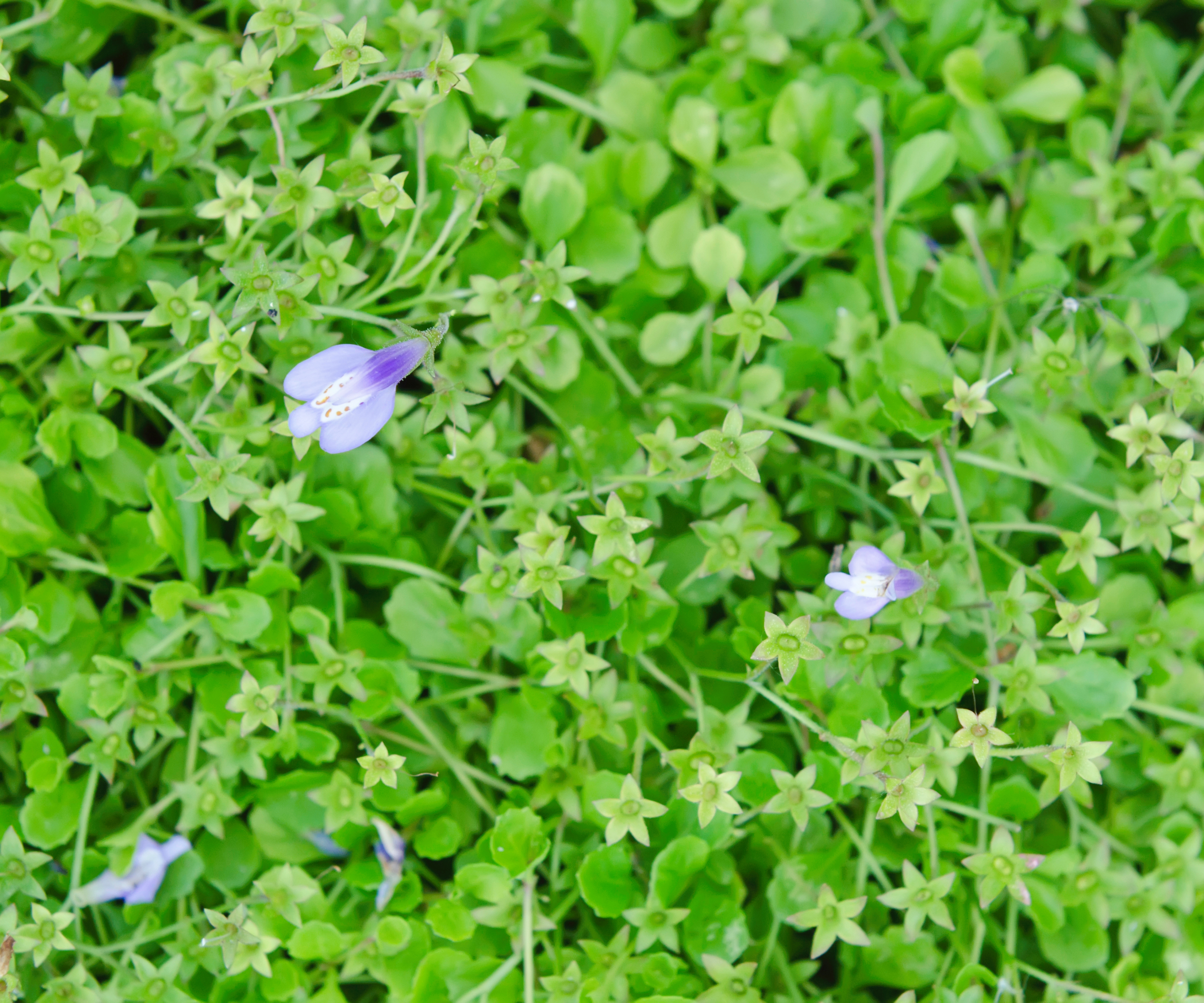
(Image credit: kschulze / Getty Images)
Producing attractive flowers in shades of purple or true blue, mazus plants grow quickly to form impressive carpet-like beds. Native to the Himalayas, plants are extremely hardy and grow well even where winter conditions are harsh. A mazus lawn alternative is a good choice for use in rock gardens, amongst pavers, and near patios.
This hardy groundcover thrives in moist soil and partial shade, making it one of the best alternatives for transitional areas of the yard. Its dense mat suppresses weeds effectively while adding vibrant seasonal color. Mazus is particularly valuable in landscapes that combine soft greenery with stone features.
10. Blueberry Sod
Pre-planted and sold in rolls, blueberry sod ground cover is an excellent option for both sloped and level gardens. Proper preparation of the area will be required in order for the plants to take root. This means all grass and weeds must first be removed. The growing space can then be amended so that each roll will come into good contact with the soil. Established lawns consisting of blueberry sod will produce an abundance of flowers, as well as attractive berries.
This is one of the best alternatives for gardeners who want beauty and productivity in one package. Blueberry sod not only offers lush greenery but also seasonal fruit, turning your lawn into an edible landscape. It requires acidic soil to thrive, so proper soil testing and amendment are crucial.
11. Sedge
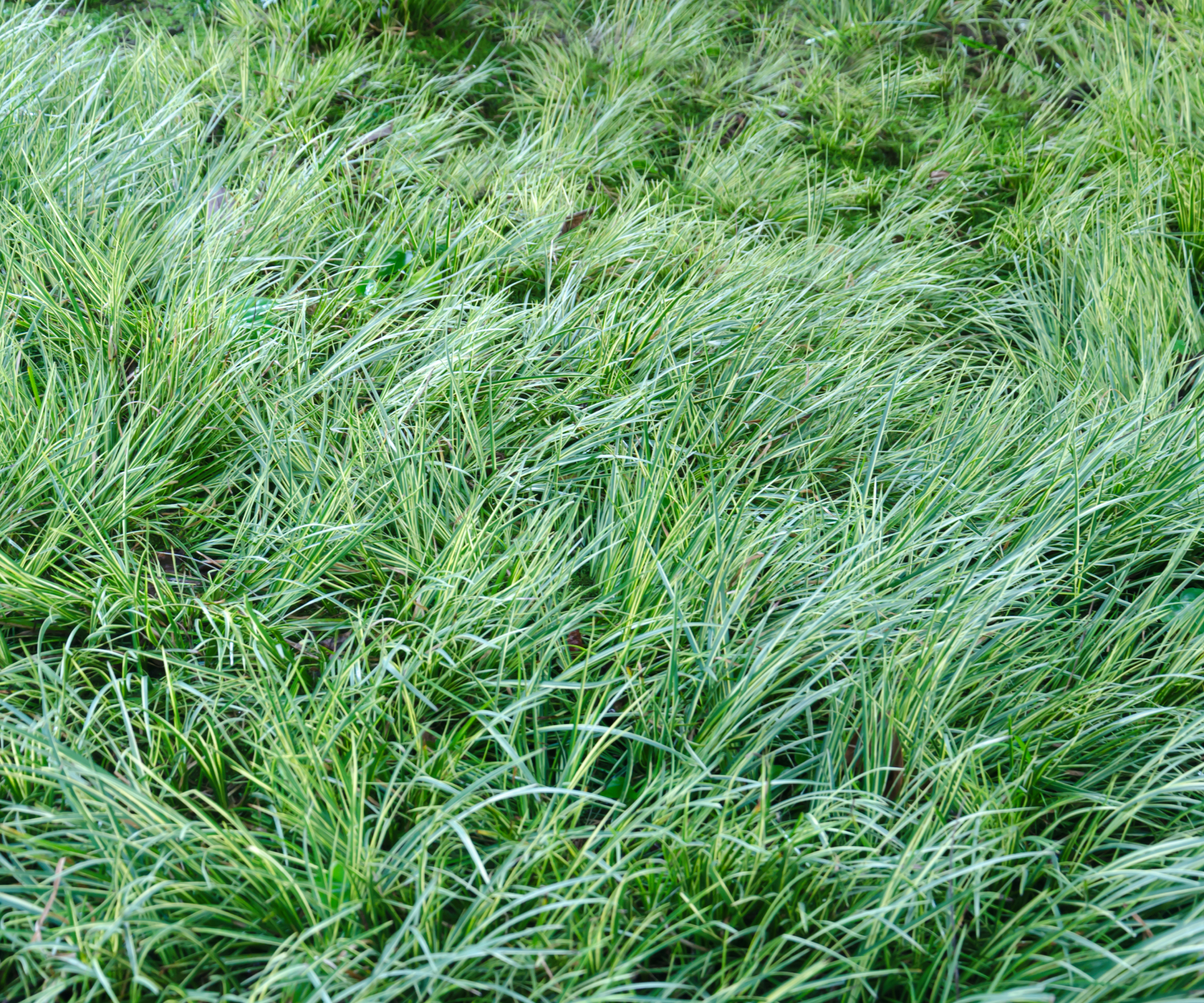
(Image credit: Elizabeth Fernandez / Getty Images)
Closely related to grass, sedge plants boast an uncanny likeness. Sedge lawns differ greatly, however, in terms of ease of growth and routine maintenance needed to keep it looking its best. Plants will only seldom require watering, feeding, or even mowing. Sedge species are widely adapted, with cultivars available fitting most any growing conditions. Though it can be started from seed, gardeners suggest the purchase of transplants, as germination rates are often low.
One of the best alternatives for those seeking a lawn-like look, sedge offers elegance without the high upkeep. Many sedge varieties are tolerant of shade, making them useful in areas where turf grass struggles. They’re also highly ornamental, with graceful arching blades that add texture to landscapes. For fresh inspiration, see how sedge can fit into Modern Garden Design.
12. Herniaria
Also known as rupturewort, herniaria green carpet produces evergreen foliage that is sure to withstand frequent visitors and use in even the busiest of spaces. Plants expand to form thickets that seldom require mowing or feeding. As herniaria is able to grow well in poor soils, they are an excellent choice for rock gardens, xeriscaped beds, and use near gravel paths or drives.
Herniaria is one of the best alternatives for homeowners looking for a durable, year-round green lawn substitute. Its compact growth habit makes it ideal for pathways or open spaces where children and pets play. Since it tolerates dry, rocky soils, it’s a top pick for low-water landscapes.
More Sustainability Ideas
This article features products available from third-party vendors in the Gardening Know How Shop.
FAQ: Lawn Alternatives for a Green Plot
Q1. Why should I consider alternatives to a traditional lawn?
A: Lawn alternatives are more sustainable, require less water and maintenance, and often support pollinators and biodiversity better than turf grass.
Q2. Which lawn alternative is best for shaded areas?
A: Moss and sedge are excellent for shaded spots, as they thrive where grass usually struggles.
Q3. What options work well in drought-prone regions?
A: Sedum, creeping thyme, and perennial peanut are highly drought-tolerant and need minimal watering once established.
Q4. Can any of these alternatives handle foot traffic?
A: Creeping thyme, chamomile, clover, and herniaria are durable enough to withstand moderate to heavy use.
Q5. Are there options that add fragrance to the yard?
A: Yes, chamomile and creeping thyme release a pleasant scent when walked on.
Q6. Which alternatives are pollinator-friendly?
A: Clover, thyme, sedum, chamomile, and perennial peanut all attract bees, butterflies, and other pollinators.
Q7. Do any of these alternatives provide edible benefits?
A: Yes, creeping thyme (herb), blueberry sod (fruit), and perennial peanut (soil-enriching legume) offer edible or functional harvests.
Q8. What’s the lowest-maintenance option?
A: Moss, sedum, and herniaria require little to no mowing, fertilizing, or watering once established.
Q9. Are there aggressive spreaders I should be cautious with?
A: Creeping Jenny spreads rapidly and can become invasive if not managed.
Q10. Which alternative looks most like a traditional lawn?
A: Sedge and clover mimic the appearance of grass while being easier to maintain.
Q11. Can I mix different alternatives?
A: Yes, combining options like thyme with chamomile or clover with daisies can create a diverse, resilient, and visually appealing yard.
Q12. Do these alternatives help with soil health?
A: Clover and perennial peanut are nitrogen-fixers, naturally enriching the soil without synthetic fertilizers.



